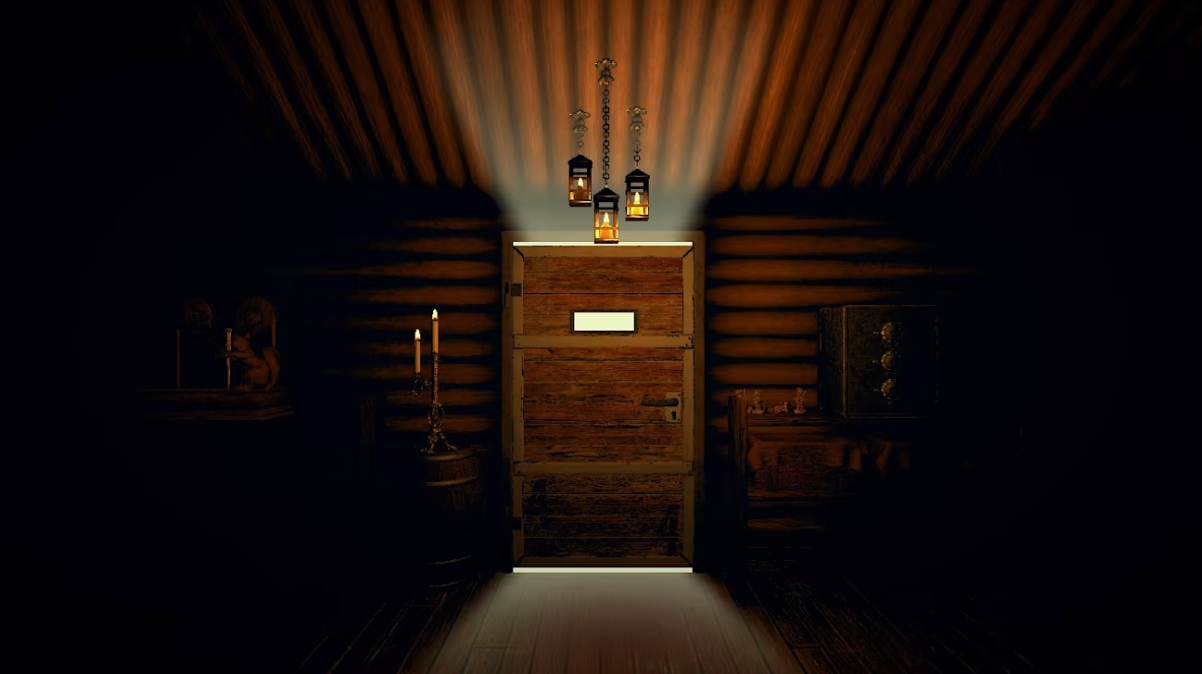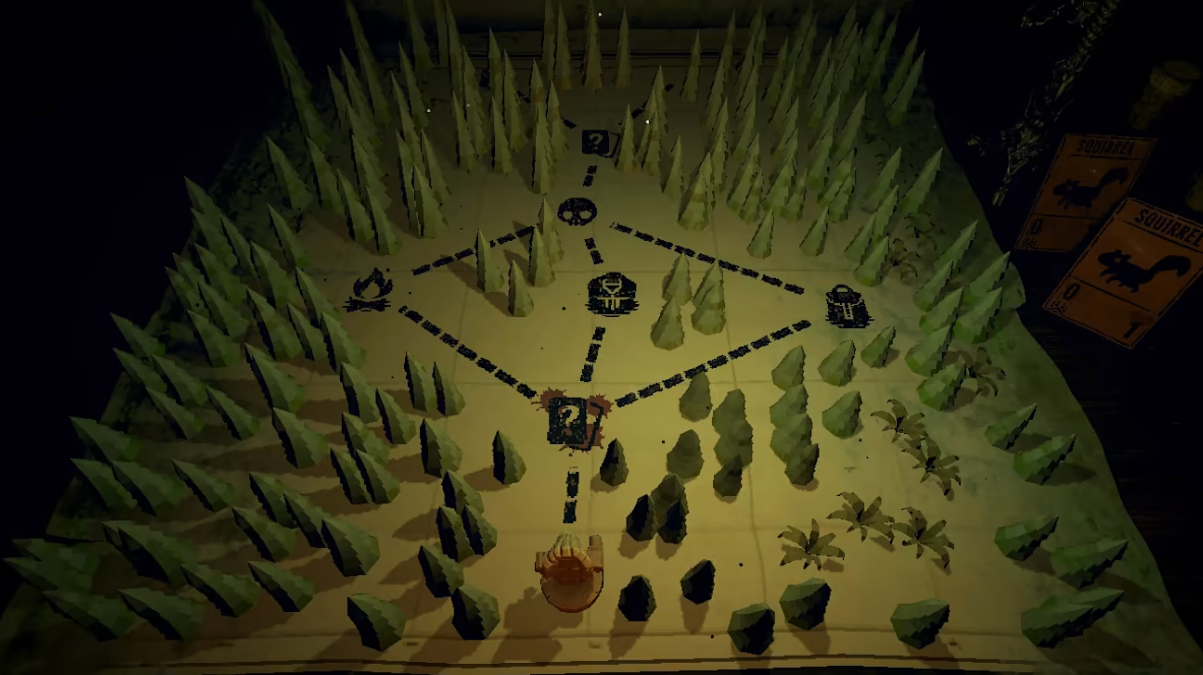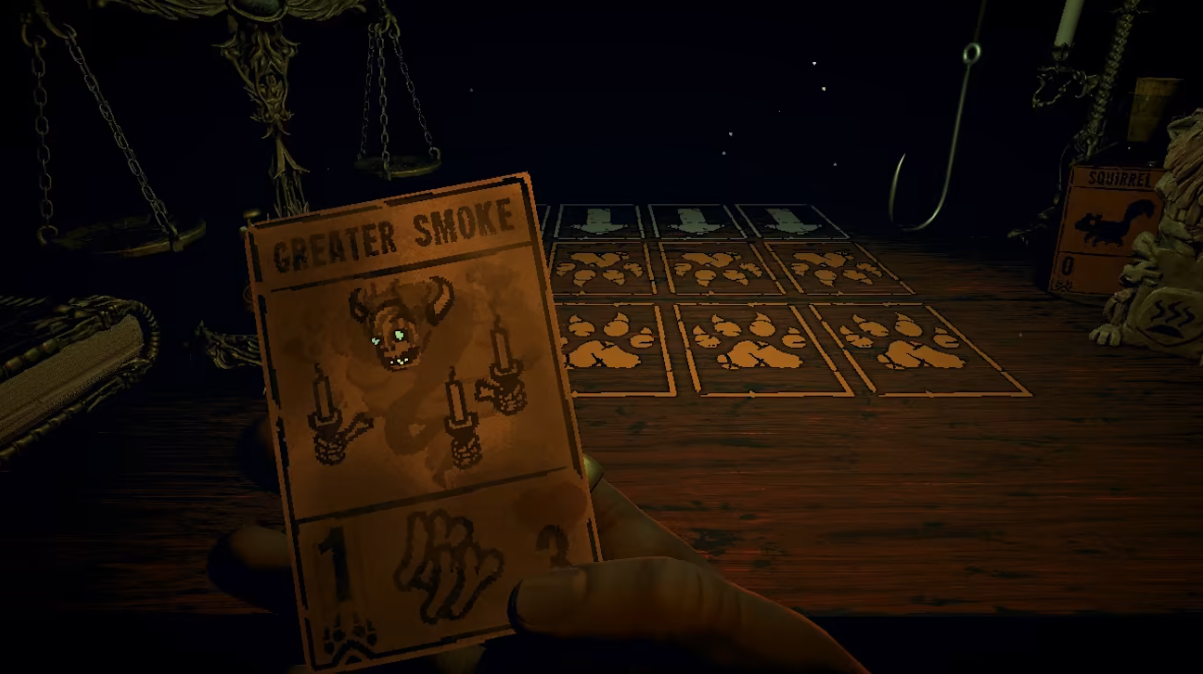Inscryption - Switch Review
"A truly unique experience that I will be playing for a long time."

You wake up in a daze while your head throbs in pain. You try to inspect the source of the pain only to find that your arms are tied down. As your eyes begin to clear and adjust, you notice you are at a small table in the middle of a dark room while a dim lantern faintly illuminates a figure across from you. To your left, you see a set of scales, to your right, a pair of pliers and a small knife. Noticing that you’re awake, the figure slowly reveals his toothy grin and stares at you with malice and excitement. The figure slowly places something on the table without breaking eye contact with you, his maniacal grin changing shape to form words. You then hear in a deep croaky voice “I activate Pot of Greed, it allows me to draw two cards from my deck!” As absurd as this story sounds it is the main concept of Inscryption.
Combining elements of deck building roguelikes with escape room puzzles, Inscryption tasks the player to escape the clutches of a serial killer named Leshy who likes to toy with his victims by forcing them to play a card game of his design, promising “escape” to those who beat him. It is up to you to use your wits and utilise everything at your disposal to beat Leshy at his own game, even if it costs you an arm and a leg…or a tooth or an eye.
WARNING! Due to the nature of this game’s structure, it will be impossible to review it without spoilers, so be warned.
[SPOILERS AHEAD BEYOND THIS POINT. READ AT YOUR OWN DISCRETION]
The Good
Inscryption’s core card game aspect blends a lot of the best mechanics from the more well known card games while adding new additions to the table to give it its own identity. Cards are given an attack and health value akin to Magic the Gathering or Hearthstone; card placement is prioritised like Elder Scrolls: Legends or Cardfight Vanguard; weaker cards can be sacrificed to play stronger cards, like Yu-Gi-Oh!. As you progress, you are introduced to more game mechanics, such as cards that can be played by using a resource gained from cards that have been destroyed in battle like Shadowcraft decks in Shadowverse; cards with an energy cost which the player refills at the start of each turn like Hearthstone; and a gem system that is a direct reference to Magic the Gathering’s “Power Nine'', that works like it’s Land system. How Inscryption differs from the games it takes inspiration from is its victory condition. When a player takes damage, they must place a weight on a scale up to the amount of damage, and whoever’s side of the scale hits the table loses. This makes the game feel more like a tug-of-war rather than a race to deplete your opponent of their health.
As for the escape room aspect of Inscryption’s gameplay, it is masterfully woven into the narrative and the core card game mechanics. You may be trapped in a cabin with a killer but your captor is confident enough that you can’t escape, so he lets you get up from the table and walk around. Strewn throughout Leshy’s cabin are puzzles that, when solved, will either reward you with new cards that are permanently added to the deck, hints on how to escape, bonus abilities for your cards or ways to cheat, like a pair of pliers to pull your teeth out and add them to Leshy’s scale since he never made a rule stating that you can’t do that.
Inscryption’s story will always keep you guessing. Every time you think you’ve figured it all out, the game throws a curveball at you and it keeps adding extra layers of complexity. One minute you’re trapped in a cabin, then the next thing you know you’ll be examining corrupted footage from a card pack opening YouTuber’s camera.
TL;DR
- Fantastic core card game inspired by the greats while doing something new
- Escape room puzzles are masterfully woven into the narrative and gameplay
- Story keeps the player guessing




The Bad
My one major gripe with this game is a major spoiler, so this is your final warning if you don’t want to be spoiled. Inscryption peaks in its first act; once you beat Leshy and escape his cabin, you quickly learn that you might as well have been playing the tutorial. You start playing the in-universe copy of the video game Inscryption which is presented in a top-down pixel RPG style reminiscent of Pokémon: The Trading Card Game on the Game Boy and you learn that you were only working with one fifth of the total card pool. While this does sound cool at first, you will quickly grow to miss the unique artstyle the game started with and the new card mechanics just aren’t as fleshed out as what you were given in the first act. Beating Act 2, the game then restarts again into a similar state as Act 1 but with a different captor. Instead of the crazed madman Leshy, you are captured by a robot named P03, and while this section of the game combines everything that's great about both Acts 1 and 2, it becomes less interesting overall - it becomes less about beating a madman at his own game and more about how to exploit a machine’s programming. On a positive note, a lot of people who played Inscryption during its initial PC release also shared these complaints, so the developers added in a little something extra. Upon beating the game, the player gets access to “Kaycee’s Mod”, an official expansion of Act 1 that turns it into a constantly repeating roguelike mode, turning the game into what it should’ve been in the first place.
TL;DR
- Inscryption’s gameplay peaks at Act 1

Final Score: 9/10
Despite one massive gripe that is shared by most people who have played the game, Inscryption at its core is an absolutely fantastic experience and I am kicking myself for not playing it sooner. Inscryption is a truly unique experience that I will be playing for a long time.
Thank you for checking out our Inscryption Switch review, thank you to Devolver Digital (via Powerup PR) for providing the review code and thank you to our Patreon Backers for their ongoing support:
- Andrew Caluzzi (Inca Studios / Camped Out)
- Bel Cubitt
- NintenVania Podcast
- Rachelle Suri-Tucker
For more reading, check out our BPM: Bullets Per Minute review.

